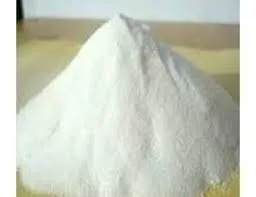
Dec . 21, 2024 01:08 Back to list
hydroxyethyl cellulose formula
Understanding Hydroxyethyl Cellulose Formula, Properties, and Applications
Hydroxyethyl cellulose (HEC) is a non-ionic, water-soluble polymer derived from cellulose, a natural polysaccharide found in plant cell walls. Renowned for its unique properties, HEC is widely utilized in various industries, including pharmaceuticals, cosmetics, food, and construction. In this article, we will delve into the formula of hydroxyethyl cellulose, its characteristics, and its diverse applications.
The Formula of Hydroxyethyl Cellulose
The chemical structure of hydroxyethyl cellulose is based on the cellulose backbone, where some of the hydroxyl groups (-OH) of the glucose monomers in cellulose are substituted with hydroxyethyl groups (-CH2CH2OH). This substitution process is achieved through the etherification of cellulose with ethylene oxide, hence the name hydroxyethyl cellulose.
The general formula for hydroxyethyl cellulose can be represented as
\[ \text{C}_6\text{H}_{10}\text{O}_{5}\text{(C}_2\text{H}_4\text{O)}_n \]
where \( n \) indicates the number of hydroxyethyl units that have been added to the cellulose molecule. The degree of substitution and the molecular weight of HEC can vary, affecting its properties and consequently its performance in various applications.
Properties of Hydroxyethyl Cellulose
HEC is characterized by several advantageous properties that make it a valuable ingredient across numerous sectors
1. Water Solubility HEC dissolves easily in cold and hot water, forming a clear, viscous solution. This property is essential in applications requiring thickening agents.
2. Viscosity Control Depending on the concentration and molecular weight, HEC solutions can exhibit a wide range of viscosities. This allows manufacturers to tailor the viscosity to meet specific formulation requirements.
3. Stability HEC solutions are stable over a broad pH range (3 to 11), making them suitable for diverse formulations, including acidic and alkaline products.
hydroxyethyl cellulose formula

4. Non-Ionic Nature Being non-ionic, HEC does not react with ionic substances, minimizing the risk of precipitation and allowing for easy compatibility with various other ingredients.
5. Film-Forming Ability HEC can form films upon drying, which is beneficial in applications such as coatings and textiles.
Applications of Hydroxyethyl Cellulose
The versatility of hydroxyethyl cellulose is reflected in its extensive range of applications
1. Pharmaceuticals In the pharmaceutical industry, HEC is used as a thickening agent in suspensions, emulsions, and ointments. Its biocompatibility and ability to control the release of active ingredients make it an ideal excipient in drug formulations.
2. Cosmetics and Personal Care Products HEC is commonly found in lotions, creams, gels, and shampoos. It acts as a thickener, stabilizer, and emulsifier, enhancing the texture and consistency of cosmetic products.
3. Food Industry As a food additive, HEC helps improve the mouthfeel and stability of food products. It is often used in sauces, dressings, and dairy products to maintain viscosity and prevent sedimentation.
4. Construction In the building industry, HEC is utilized in adhesives, paints, and cement mixtures. It improves workability and water retention, ensuring better adhesion and performance of construction materials.
5. Agriculture HEC is used in agricultural applications as a thickening agent and stabilizer in pesticide formulations, enhancing the efficacy and distribution of active ingredients.
Conclusion
Hydroxyethyl cellulose is a multifunctional polymer that boasts a plethora of applications across various industries due to its unique properties. With its water solubility, viscosity control, and stability, HEC continues to be a critical component in many formulations. As research and technology advance, the potential for new applications and formulations utilizing hydroxyethyl cellulose is bound to expand, further cementing its status as an essential ingredient in both industrial and consumer products.
-
Versatile Hpmc Uses in Different Industries
NewsJun.19,2025
-
Redispersible Powder's Role in Enhancing Durability of Construction Products
NewsJun.19,2025
-
Hydroxyethyl Cellulose Applications Driving Green Industrial Processes
NewsJun.19,2025
-
Exploring Different Redispersible Polymer Powder
NewsJun.19,2025
-
Choosing the Right Mortar Bonding Agent
NewsJun.19,2025
-
Applications and Significance of China Hpmc in Modern Industries
NewsJun.19,2025







